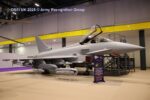The U.S. Navy has officially launched its Next-Generation Modular Missile (NGMM) program aimed at revolutionizing how naval strike capabilities are deployed across surface combatants and submarines. Designed to support distributed maritime operations (DMO) and expeditionary advanced base operations (EABO), the NGMM initiative seeks to create a family of adaptable missile payloads that can be rapidly reconfigured to match mission needs.
Program Overview: A Shift Toward Modularity and Interoperability
Announced by the Naval Sea Systems Command (NAVSEA) in September 2025 via a Request for Information (RFI), the NGMM program represents a strategic pivot toward modularity in naval munitions architecture. The concept centers around a common missile body or “bus” that can accept multiple seeker-heads, warheads, propulsion options, and guidance packages depending on mission requirements—ranging from anti-ship to land attack to electronic warfare roles.
The RFI outlines key objectives:
- Developing a modular open systems architecture (MOSA) compliant missile framework
- Ensuring compatibility with existing launch systems such as Mk 41 Vertical Launch System (VLS), deck-mounted canisters, and submarine torpedo tubes
- Enabling rapid reconfiguration at sea or ashore with minimal logistical burden
- Supporting both kinetic and non-kinetic payloads including EW modules or decoys
This approach mirrors the U.S. Air Force’s “weapon-as-a-system” vision seen in programs like the Stand-in Attack Weapon (SiAW), but tailored for maritime multi-domain operations.
Strategic Drivers: Distributed Lethality & Peer Competition
The NGMM program is part of a broader doctrinal shift within the U.S. Navy toward distributed lethality—a concept that seeks to disaggregate firepower across a wider array of platforms rather than concentrating it in high-value units like aircraft carriers or large surface combatants.
This is particularly relevant against near-peer adversaries such as China’s PLA Navy or Russia’s Northern Fleet where saturation attacks using long-range anti-access/area denial (A2/AD) systems threaten traditional force concentrations. By equipping smaller vessels—such as Littoral Combat Ships (LCS), Constellation-class frigates—or even unmanned surface vessels (USVs) with reconfigurable missiles like NGMM, the Navy aims to complicate enemy targeting calculus while maintaining offensive punch.
Furthermore, the ability to tailor payloads allows commanders greater operational flexibility in contested environments where rules of engagement may shift rapidly between strike missions, suppression of enemy air defenses (SEAD), or decoy/electronic deception roles.
Technical Architecture & Integration Challenges
The envisioned NGMM will likely feature a modular design similar in philosophy to Lockheed Martin’s Joint Air-to-Ground Missile (JAGM) or MBDA’s Modular Effectors Family used by European navies. Key technical enablers include:
- MOSA compliance: Standardized interfaces for plug-and-play components
- Advanced data links: Real-time retargeting via Link-16 or future mesh networks
- Diverse seekers: RF-homing, EO/IR imaging seekers, passive RF for anti-radiation missions
- Diverse propulsion modules: Solid rocket motor baseline with optional ramjet/scramjet boosters for extended range variants
A major engineering challenge lies in ensuring environmental survivability across multiple launch environments—particularly transitioning between VLS cold-launch systems on surface ships versus swim-out torpedo tube launches from submarines under pressure hull constraints.
An additional complexity is software integration into existing combat management systems like Aegis Baseline 10 or COMBATSS-21 aboard small combatants.
Industry Participation & Prototyping Pathway
The RFI has already attracted interest from major defense primes including Lockheed Martin Missiles & Fire Control, Raytheon Missiles & Defense, Northrop Grumman Defense Systems Division, and emerging players such as Anduril Industries and Kratos Defense who may offer novel payloads or AI-enabled guidance kits.
NAVSEA anticipates releasing a formal Broad Agency Announcement (BAA) by Q1 FY2026 followed by competitive prototyping awards under Other Transaction Authority (OTA). Initial flight demonstrations are tentatively targeted for FY2028 aboard Arleigh Burke-class destroyers equipped with upgraded VLS interfaces.
The program may also leverage technologies developed under other Pentagon initiatives such as DARPA’s OpFires ground-launched hypersonic booster stack or ONR’s Compact Power Systems research into miniaturized directed energy payloads potentially compatible with NGMM bus dimensions.
Tactical Implications Across Platforms and Domains
If successful, NGMM could become a cornerstone munition across multiple domains:
- Littoral Combat Ships: Enhanced relevance through flexible loadouts tailored per deployment theater—from ASuW patrols in Indo-Pacific chokepoints to SEAD near contested islands
- Attack Submarines: New options beyond Tomahawk Land Attack Missiles—such as deploying electronic attack modules covertly near coastal radars without attribution risk
- Manned-Unmanned Teaming: USVs acting as forward sensors/countermeasures while manned ships retain kinetic variants of NGMM ready for follow-on strikes
- NATO Interoperability: MOSA-compliant architecture could enable allied navies—e.g., UK Type 26 frigates or German F126—to adopt select components under FMS pathways without full system buy-in
A Complement—not Replacement—for Legacy Systems?
NAVSEA officials emphasize that NGMM is not intended to replace legacy missiles like Tomahawk Block V or SM-6 but rather supplement them with mission-adaptive capabilities where volume fires are impractical due to magazine constraints or when escalation control is paramount.
This layered approach reflects evolving threat environments where precision effects—whether kinetic disruption of radar nodes or non-lethal jamming of drone swarms—may be more operationally useful than brute-force salvos alone.
Outlook: From Concept to Capability by Early 2030s?
If development proceeds on schedule—with successful prototyping by FY2028–29—the first operational deployment of an NGMM variant could occur aboard Flight III Arleigh Burke destroyers by early FY2031. Submarine integration would likely follow due to more complex certification timelines involving underwater safety protocols and acoustic signature mitigation testing.
The ultimate success of NGMM will hinge not only on technical execution but also on doctrinal acceptance among fleet operators who must adapt tactics around flexible but potentially less familiar munitions mixes per sortie loadout planning cycles.









